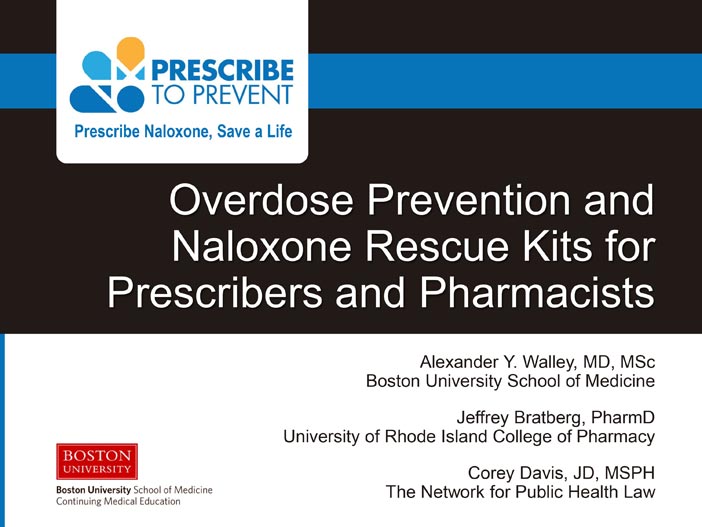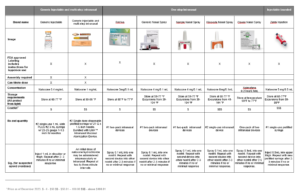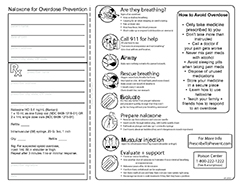General
Medical providers may have the opportunity to maximize patient quality of life by providing prescription opioids, yet those same medicines have contributed to the fact that drug overdose has overtaken motor vehicle crashes to be the #1 cause of injury death in the United States. Providers can consider taking the stance of “risky medicines”, instead of “risky patients” and engage in proactive dialogue with patients to minimize poisoning, over sedation, and overdose risk with patients who need opioid medications to improve function. Discussing an emergency overdose/poisoning/oversedation plan and naloxone prescribing is an essential component of that dialogue. We provide some sample documents that may facilitate the process.
Continuing Education Resources

Center for Disease Control and Prevention:
Naloxone Training | Opioids | CDC
This training can be completed in a single one-hour module, or as mini-modules and patient cases.
Upon completion, continuing education credits may be earned.
To receive CNE, CME, or ACPE, complete the test and evaluation. Note: you must score 70% or higher to receive credit.
Overdose Risk and Patient History
- Review medications
- Take a substance use history
- Check the prescription monitoring program.
- Take an overdose history – Ask your patient whether they have:
- Overdosed or had a bad reaction to taking opioid medications?
- Witnessed an overdose?
- Received training to prevent, recognize, or respond to an overdose or medication-related oversedation?
Prescribing Various Naloxone Products
This chart describes product comparison, prescribing variation and ordering information:
Instructions for Prescribing and Dispensing Naloxone
Clinician Guidance
Here are examples of clinician materials to support and encourage naloxone rescue kit prescribing. These examples reflect variance in prescribing guidelines and inclusion criteria. We recommend that you adapt these examples to the needs of your clinical practice.
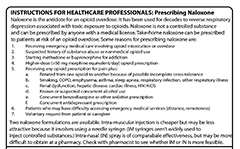
Instructions for health care providers with patient inclusion criteria and billing options
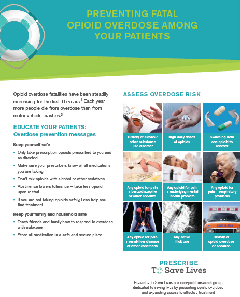
“Preventing fatal opioid overdose among your patients” provider brochure

Guide for clinicians including prevention language, patient inclusion criteria and billing options for providers in CA
It is from the same opioid safety series as this one for pharmacists.
National Prescription Drug Take Back Day

Tips for Safe Storage and Disposal
Additional Resources
CDC Factsheet: Talking About Naloxone with Patients Prescribed Opioids
FDA Drug Safety Communication (7/23/20): FDA recommends health care professional discuss naloxone with all patients when prescribing opioid pain relievers or medicines to treat opioid use disorder
AMA Opioid Task Force: Help save lives: Co-prescribe naloxone to patients at risk of overdose
Harm Reduction Therapeutics July 28th 2023 Press Release re: RiVive
